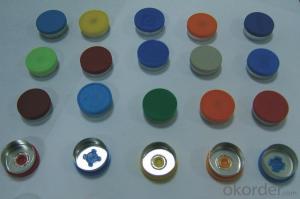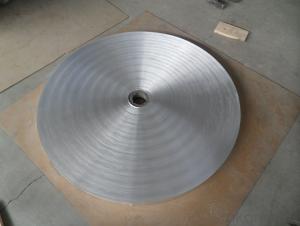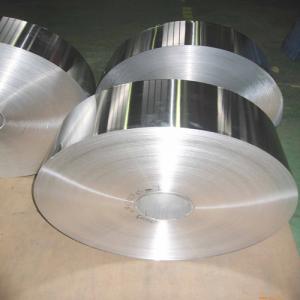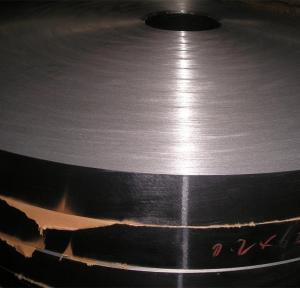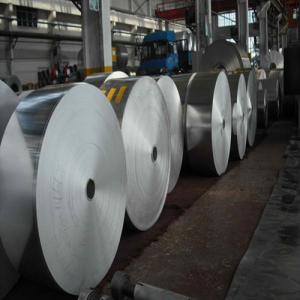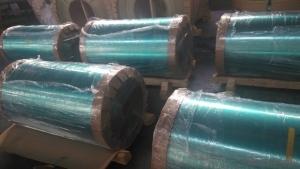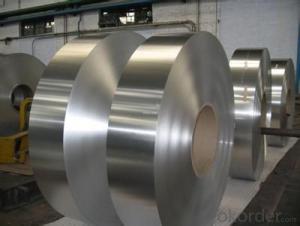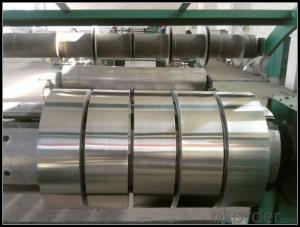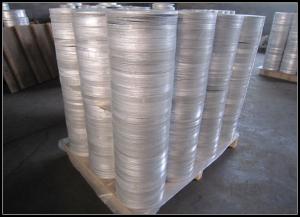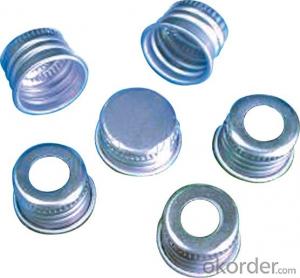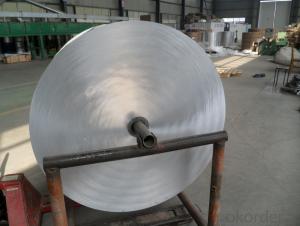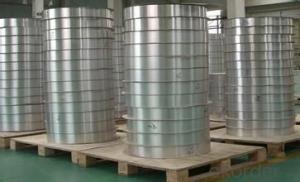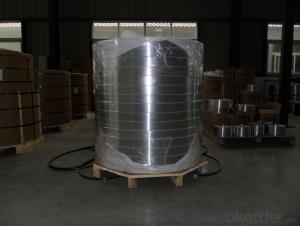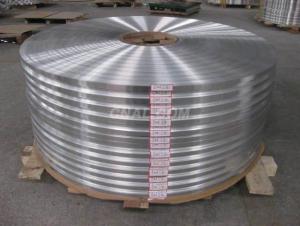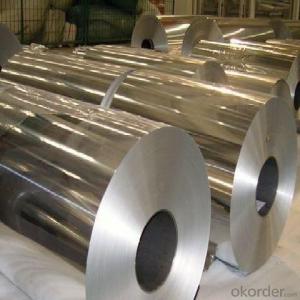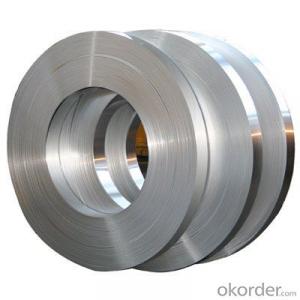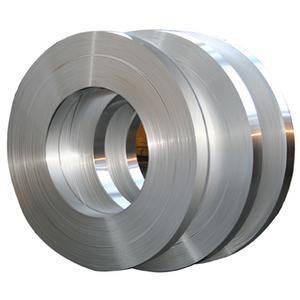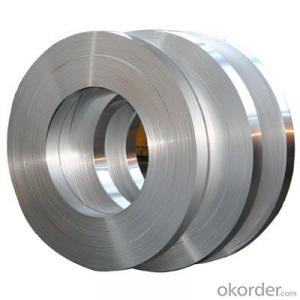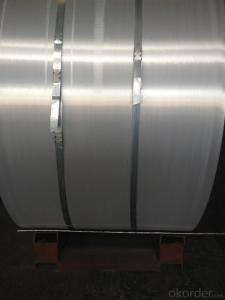Aluminum Trim Strips for Medicine Bottle Caps
- Loading Port:
- China Main Port
- Payment Terms:
- TT or LC
- Min Order Qty:
- -
- Supply Capability:
- 500 Tons m.t./month
OKorder Service Pledge
OKorder Financial Service
You Might Also Like
1.Description
Aluminum strip is widely used in Caps, especially for medicine bottle cap, because the good anti heat and anti wet and high elongation specification. it's very good for medicine bottle caps. Normally it's coated aluminum strip, coating thickness is around 4~5mic.
2.Specification and Application
Specification
| Alloy | 8011 |
| Temper | H12/ H14/ H16 |
| Process | DC |
| Thickness | 0.17~0.3mm |
| Width | As required |
| Core ID | As required |
Property
| Tensile strength | ≥100Mpa |
| Elongation | ≥2% |
| Tolerance of size | As GB Standard |
3. Advantages
We've been specialized in aluminium for more than ten years, we know this product very well, and we have good finacial support from government.
4. Pictures
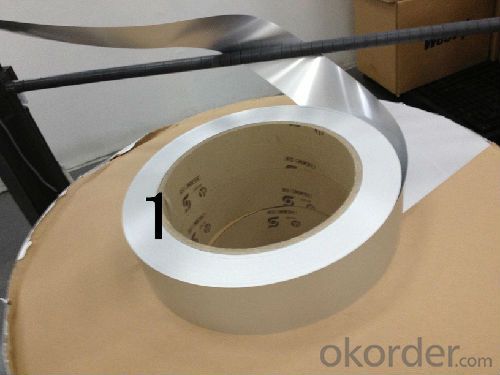
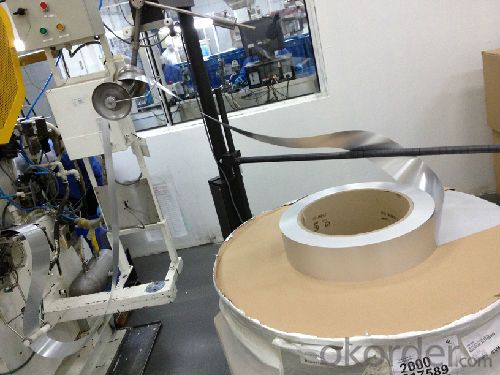
5. FAQ
1) What is your delivery time?
Our regular production time is over 30 days, It depends on the order quantity also.
2) What is your payment term?
We accept T/T, LC at sight, Usance LC 30, 60, 90, 120, 180 DAYS.
3) What is your price structure?
Our price is based on Shanghai Metal Price(SMM), not LME, but we could offer LME+ Conversion for your reference.
4) What is your minimum order quantity?
It's 3tons per size.
- Q: This question asks for a step-by-step guide on how to measure and cut an aluminum strip to fit a specific project.
- <p>To measure and cut an aluminum strip for your project, first determine the required length and width. Use a measuring tape or ruler for precise dimensions. Mark the measurements on the strip with a marker. For cutting, use a hacksaw or a metal cutting saw for straight cuts. Ensure the strip is secured in a vise or clamped to prevent movement. Cut along the marked lines, and use metal files or sandpaper to smooth any rough edges. For curved cuts, use a jigsaw with a metal cutting blade. Always wear safety goggles and gloves to protect yourself from metal shards and sharp edges.</p>
- Q: Why should single core cable be armored with aluminium tape?
- Single core cable can only be used for single-phase power supply, so the flow number current will produce much flux, and the external metal parts except induction current, overheating.
- Q: What benefits does aluminum provide compared to other metals when used for roofing applications?
- <p>Aluminum offers several advantages for roofing, including its lightweight nature, which reduces structural load. It is highly resistant to corrosion, making it suitable for various climates and environments. Aluminum's malleability allows for easy shaping and forming, enabling complex designs. It also has excellent reflectivity, which can help in reducing heat absorption and improving energy efficiency. Additionally, aluminum is recyclable and has a lower environmental impact compared to some other metals. These properties make aluminum a popular choice for roofing materials.</p>
- Q: Is it possible to utilize aluminum strips in constructing a rainscreen wall system?
- <p>Yes, aluminum strips can be used to create a rainscreen wall system. Aluminum is a popular choice due to its durability, resistance to corrosion, and low maintenance requirements. It allows for proper ventilation and drainage behind the cladding, which helps prevent moisture damage and thermal stress. When designing a rainscreen system with aluminum strips, ensure that the installation follows building codes and standards, and that the strips are properly spaced and sealed to maintain the system's effectiveness.</p>
- Q: Is it possible to use aluminum strips to construct a solar reflector system for residential or commercial purposes?
- <p>Yes, you can use aluminum strips to create a solar reflector system for your home or business. Aluminum is a reflective material and can be shaped into strips to reflect sunlight. These strips can be arranged in a way to direct sunlight towards solar panels or into specific areas to reduce the need for artificial lighting and heating. However, for optimal efficiency, you should consider the angle of reflection, the positioning of the strips relative to the sun's path, and the overall design of the system. Consulting with a professional in solar technology can help ensure that your solar reflector system is effective and safe.</p>
- Q: This question asks for the standard cost range of aluminum strip stock, which is a type of metal material.
- <p>The typical price range for aluminum strip stock can vary significantly based on factors such as grade, thickness, width, and market conditions. As of recent market trends, prices can range from approximately $1.50 to $3.00 per pound for common grades like 1100 or 3003. However, for more specialized grades or custom specifications, the cost can be higher, potentially ranging from $2.00 to $5.00 per pound or more. It's important to note that these prices are subject to change due to fluctuations in the global aluminum market and should be verified with a supplier for the most accurate and current pricing.</p>
- Q: Explain how aluminum strips enhance the performance and durability of bicycles.
- <p>Aluminum strips contribute to bicycle performance and durability by providing a lightweight and strong material for the frame and components. Aluminum's low density reduces the overall weight of the bike, enhancing its acceleration and climbing capabilities. Its high strength-to-weight ratio allows for thinner frame walls without compromising structural integrity, which improves rigidity and power transfer from the rider to the wheels. Additionally, aluminum's resistance to corrosion and fatigue means that the bike can withstand harsh weather conditions and repeated use without significant wear and tear, thus increasing its longevity and reliability.</p>
- Q: What types of aluminum strips are known for their durability?
- <p>Yes, there are several types of aluminum strips known for their durability. One of the most durable types is 7075 aluminum, which is an alloy that offers high strength and is commonly used in aerospace applications. Another durable option is 6061 aluminum, which is a heat-treatable alloy with good mechanical properties and is often used in construction and transportation. Additionally, 3003 aluminum is known for its corrosion resistance and is used in applications where durability against weathering is important. The durability of aluminum strips can also be enhanced through various surface treatments and coatings.</p>
- Q: This question asks for methods to identify if the roof material is aluminum strips.
- <p>To determine if your roof is made of aluminum strips, you can look for the following characteristics: 1) The roof has a shiny, metallic appearance, which is typical of aluminum. 2) The strips are lightweight and flexible, making them easy to handle. 3) They are often interlocking, which is a common feature of aluminum strip roofing. 4) Check for any manufacturer's markings or labels that might indicate the material. If you're unsure, a professional roof inspector can help confirm the material by examining the roof closely or taking a small sample for testing.</p>
- Q: What safety regulations impact the use of aluminum strips in construction?
- <p>Yes, there are safety regulations that affect the use of aluminum strips in construction projects. These regulations vary by country and region but generally include requirements for material strength, durability, and resistance to corrosion. For instance, aluminum strips must meet specific standards for load-bearing capacity and fire resistance. Compliance with electrical safety standards is also crucial if the strips are used in electrical installations. Additionally, construction codes often dictate the proper use of aluminum strips in structural components, cladding, or as reinforcement. It's essential to consult local building codes and industry standards like the International Building Code (IBC), American Society for Testing and Materials (ASTM) standards, or European Norm (EN) standards to ensure compliance with safety regulations.</p>
Send your message to us
Aluminum Trim Strips for Medicine Bottle Caps
- Loading Port:
- China Main Port
- Payment Terms:
- TT or LC
- Min Order Qty:
- -
- Supply Capability:
- 500 Tons m.t./month
OKorder Service Pledge
OKorder Financial Service
Similar products
Hot products
Hot Searches
Related keywords
